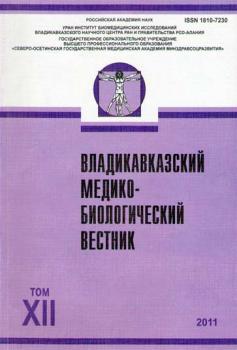The article presents the results of the analysis of the chronotype, parameters of the bioelectrograms, indicators of the chronotop spatial-temporal perception of the Suvorov Military School students of 13–14 years old. The representatives of expressed morning chronotype dominate among them. “Individual minute” in the students practically coincides with the astronomical minute. It was found out that the parameter of bioelectrogram «fractality» is above in the students with indifferent chronotype, but “mood” is lower than that in the students with expressed morning chronotype.
chronotype, spatial-temporal perception of chronotop, individual minute, individual decimeter, GDVbioelectrography, anxiety.
Хронотип представляет собой вариант генетически детерминированных внутренних биологических ритмов человека. В основе хронотипических вариаций лежит целый ряд нейрофизиологических и эндокринных механизмов, которые в совокупности определяют индивидуальный профиль активности циркадной системы организма [1]. Хронотип отражается на функциональной активности, психофизиологических особенностях и состоянии здоровья человека, его определение является важным этапом исследования. Методом ранней оценки функционального состояния организма является ГРВ-биоэлектрография, которая позволяет с минимальными затратами времени дать оперативную скрининговую оценку состояния организма, получить информацию об уровне энергетического гомеостаза в целом и отдельных функциональных систем [2]. Пространственно-временная организация биологических систем, участвующая в регуляции и управлении биосистемой, является не-обходимой компонентой адаптации организма к меняющимся условиям внешней среды. Индивидуальные величины: «чувство времени» и «пространства» являются критериями оценки функционального состояния организма [6, 8, 9].
1. Arushanyan E. B., Mastyagina O. A. Unequal influence of Eleutherococcus on psychophysiological parameters in healthy people depending on the time of day and chronotype test. Experimental and clinical pharmacology.2009; 72(3): 10-2.
2. Korotkov K. G. Basics GDV bioelectrography. 2001; 360.
3. Lisenkova V. P., Shpagonova N. G. Individual and age features of perception of time (for example, children’s, teenagers and adolescent samples). Psychological Journal. 2006; 27(4): 49-57.
4. Melnikova S. D., Semenova T. T. Chronotype in different age groups for men and women as an indicator of the body’s adaptive abilities. Ecology and Life. 2001; 1: 136-9.
5. Romanov Y. A., Efankina O. N., Irikov O. A. A study of measuring of man chronotop under its various states. Modern high technologies. 2005; 2: 43-4.
6. Romanov Y. A. Spatial and temporal organization of biological systems. Vladikavkaz Medico-biological Bulletin. 2001; 1(2): 42-9.
7. Romanov Y. A., Irikov O. A., Efankina Y. A. Chronotop and changes in various states of human. Rhythm problems in the natural sciences. 2004; 359-62.
8. Urumova L. T., Botoeva N. K., Khetagurova L. G. et al. Biomedical aspects of the pathogenesis of examination stress among the students. Vladikavkaz Medico-biological Bulletin. 2006; 6(11): 9-16.
9. Urumova L. T., Botoeva N. K., Khetagurova L. G. Dynamics of psychophysiological indicators of the medical students in the learning process. Bulletin of new medical technologies. 2009; 16(3): 168-72.





